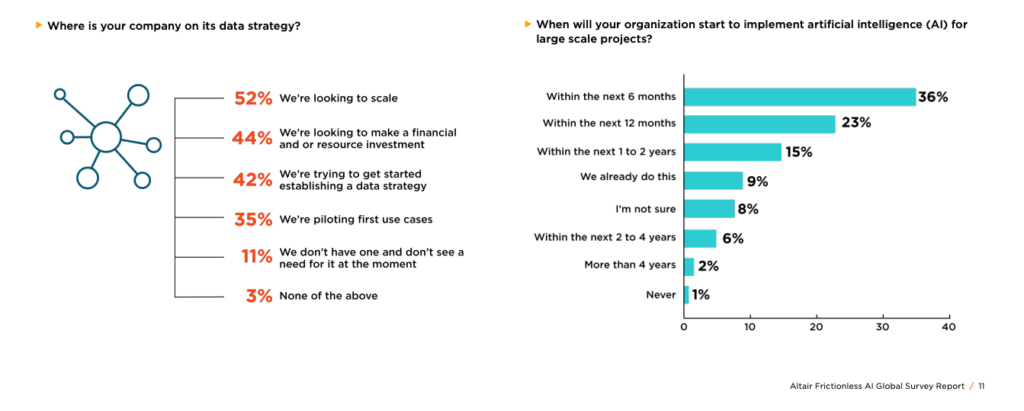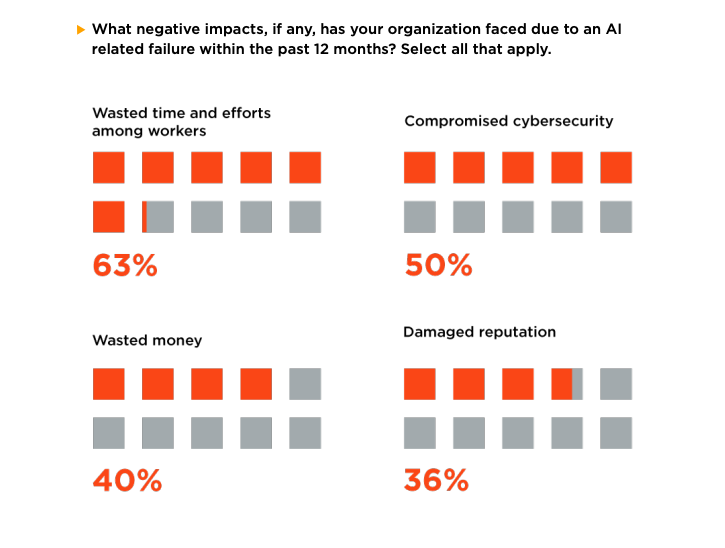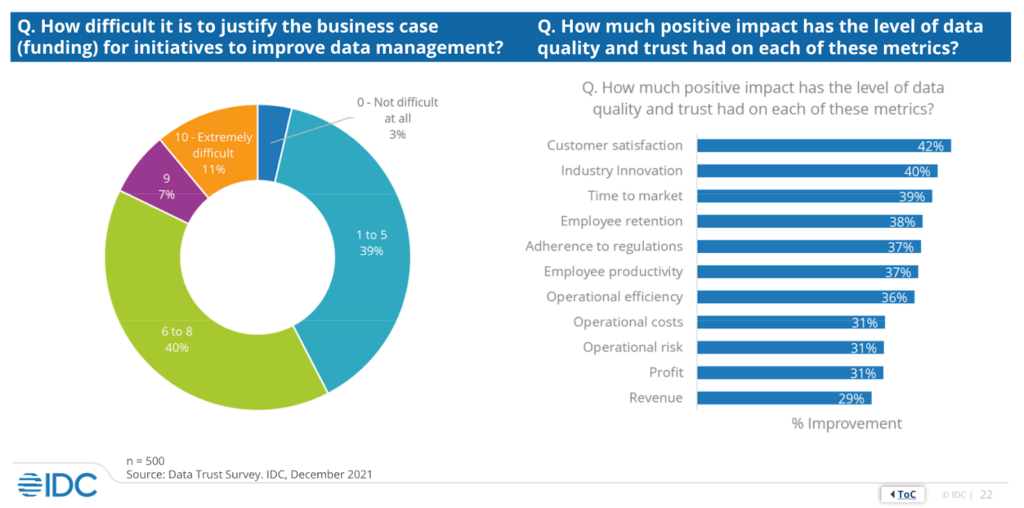
If you have followed through this five-part blog series, you have likely come to the realization that while AI offers plenty of opportunities, there are also many challenges and risks to overcome before deploying it.
Here is a quick recap of what we have covered so far in this series:
- Semarchy’s decade-long history as a champion of AI with pre-packaged AI/ML solutions as early as 2014
- How we envision AI as a copilot to augment key MDM stakeholders such as business users, data stewards, and app designers
- Why our open, constructive architecture approach to integrate AI/ML capabilities in MDM is better for your ambitious future
- How to integrate OpenAI’s ChatGPT capabilities inside xDM in just five minutes
While our opinions may be informative, you are likely curious about real, practical guidance and immediate steps you can take today. Let us address some of these burning questions.
Is My Organization Too Late to Leverage AI Competitively?
The short answer is no. You have time; use it wisely.
We get it. Buzz and hype around new technologies happen and they are generally great for the industry and innovation as a whole. This often leaves us trying to keep up with the Joneses, believing we are so much farther behind our peers than we actually are.
Still not convinced? Take a look at the Frictionless AI survey results from Altair conducted this year of over 2,000 professionals from all over the world and across every industry.

Forget about AI for a moment, here’s where companies are with their data strategy today:
- 42% of companies are just getting started
- 35% are piloting their first use cases
Specific to AI, just a little over half, 59% will start to implement AI for their larger projects within 12 months. So yes, you are most likely not behind at all. Based on this data, if you want to quickly get ahead of your competitors, just focus on building a robust data strategy.
Semarchy can help you de-risk and pilot your data strategy in as fast as two weeks.
What are the Impacts of Ignoring AI Risks?
From the same Altair Frictionless AI study, 42% of AI implementations failed in the last two years. There are significant negative impacts to ignoring AI risks.
These negative impacts include:
- 63%: Wasted time and effort among workers. With rising labor rates and talent shortages, can your organization afford that?
- 50%: Compromised cybersecurity. The minimum GDPR fine is 20 million Euros (or four percent of global turnover). Is ignorance worth it?
- 40%: Wasted money. With rising interest rates and recessionary headwinds, will you have enough capital to withstand economic turbulence?
- 36%: Damaged reputation. This can levy direct and indirect short- and long-term consequences to your organization. Can you survive this backlash?

This is not to be bearish on AI’s limitless potential, but there are real consequences from not prudently considering the risks and challenges of implementing AI without an existing strong data strategy.
Even with necessary risk mitigation activities related to AI, you are likely not behind your peers.
A recent McKinsey study revealed on average, only 16.5% of organizations are actively working to mitigate AI-related risks and challenges. The top five of these are inaccuracy, cybersecurity, intellectual property infringement, regulatory compliance, and explainability.
Becoming a success and not a statistic is easier and within reach if you approach AI with a strong data strategy and some healthy skepticism.
What are the Best Practices to Overcome AI Risks and Obstacles?
The good news is that overcoming AI/ML challenges does not require AI/ML solutions. IDC, a leading analyst firm, provides an excellent best practices framework for tackling these obstacles that align closely with our approach in three key areas:
- Organizational challenges: AI/ML operations will require collaboration and training between multiple personas with a diversity of expertise and skills.
- Building an integrated team with a multidisciplinary skill set will close these gaps.
- Operational challenges: Manual processes and lack of standard tools between AI/ML model training and production environments.
- Creating a standardized software stack with automations can help solve these challenges.
- Business challenges: Unclear use cases on delivering value with AI/ML investments.
- Starting with a solid data foundation while taking a phased approach to deliver AI can help mitigate risks and increase time to value.
These best practices seem simple, yet they are not necessarily easy to enact.
How Will Semarchy Help Me Overcome AI Obstacles?
Semarchy is a data leader and the most peer-recommended MDM vendor. Even with these accolades, we can only do so much in fostering collaboration in an organization or solving operational challenges. Our amazing partners may be more fit for that.
However, what we can do is help you create a strong data strategy and foundation quickly.
We can typically de-risk and pilot a solution with your data in as fast as two weeks. This will accelerate you ahead of 42% of your competitors who are just getting started.
Having a data foundation you can trust is relatively risk-free, but has a profound impact according to a data trust study by IDC. This includes indirect benefits like customer satisfaction and industry innovation. But perhaps more importantly, you’ll see direct bottom line impacts like a 29% improvement in revenue and a 31% reduction in operational costs.

Still, justifying a business case for MDM and improving your organization’s data strategy is difficult.
After over a decade of delivering hundreds of successful MDM implementations, we have developed a growing library of free decision-making tools to help justify your business case.
- MDM & Data Integration ROI Calculator
- Customer Success Stories
- Rapid Delivery Blueprint
- Independent MDM Selection Guide
- And many more resources
While we are primarily focused on rapidly delivering success to your MDM initiatives, we are also actively exploring the best routes to bring native AI/ML capabilities to our products.
Want to be Completely AI-Ready in Under 12 Weeks?
We know you are as ambitious about AI’s future as we are.
Let us help you accelerate that timeline to create a strong data foundation for your AI ambitions in as fast as 12 weeks.
All the best.
-TH

